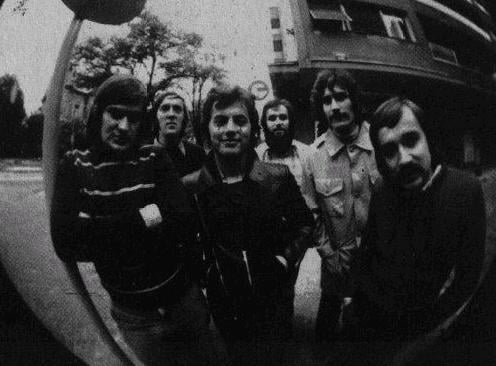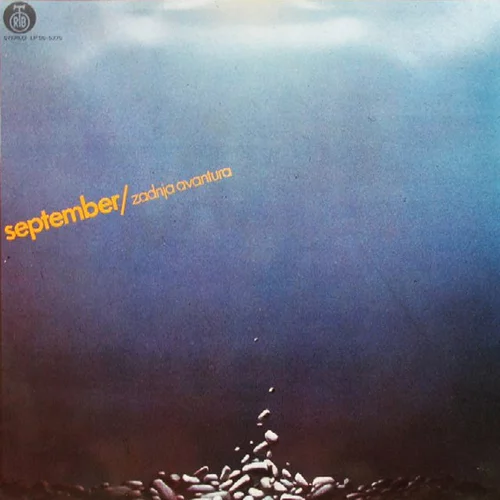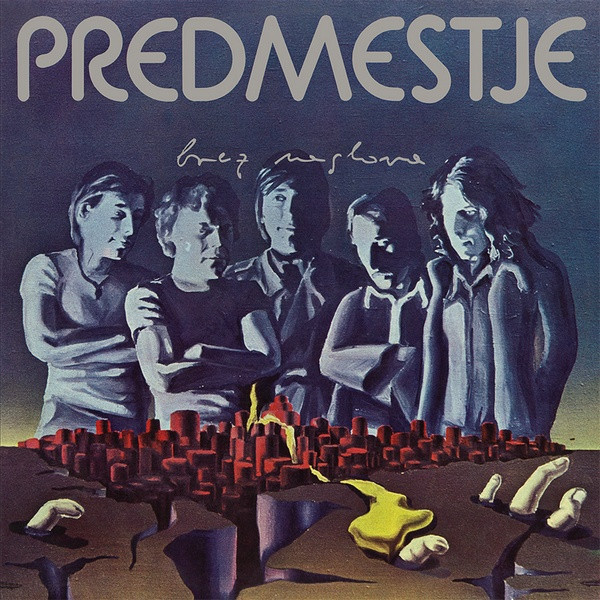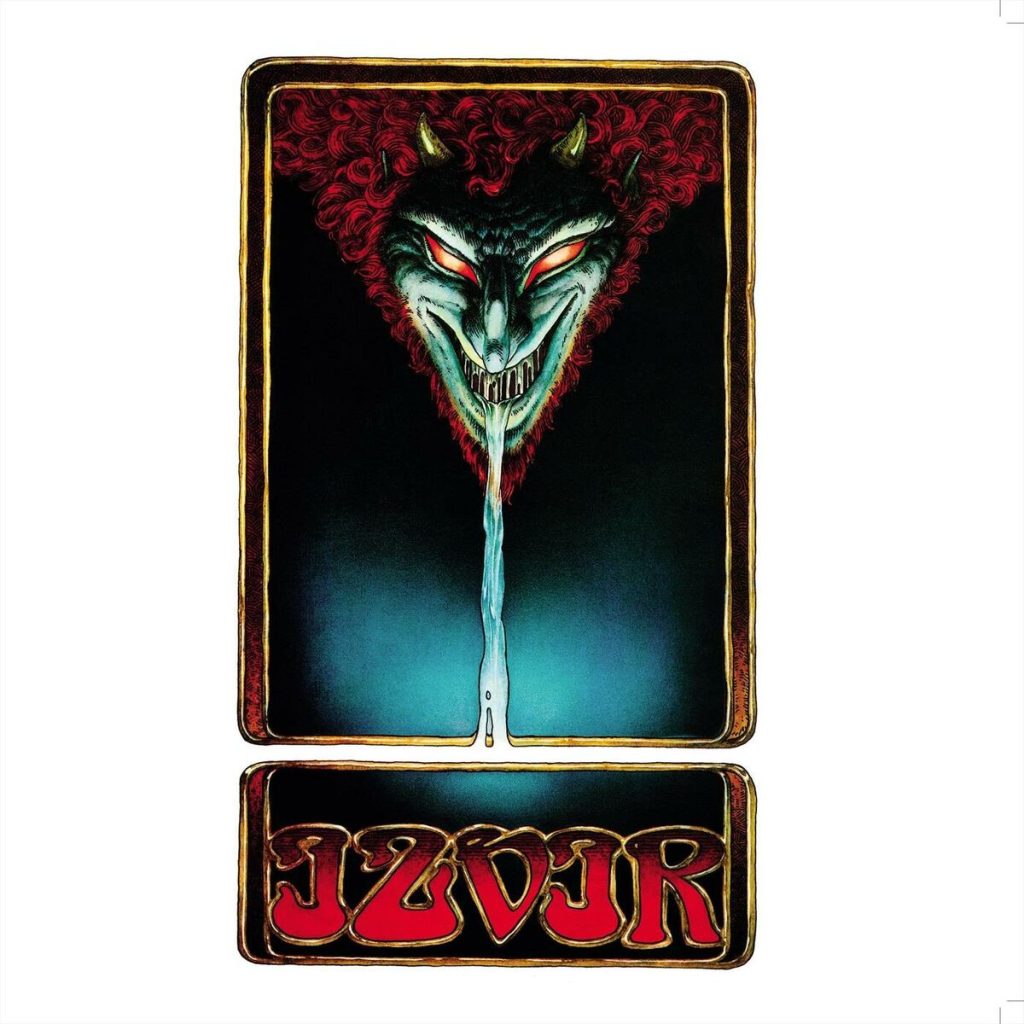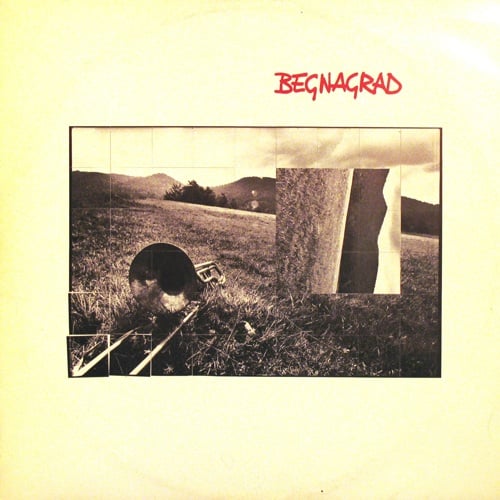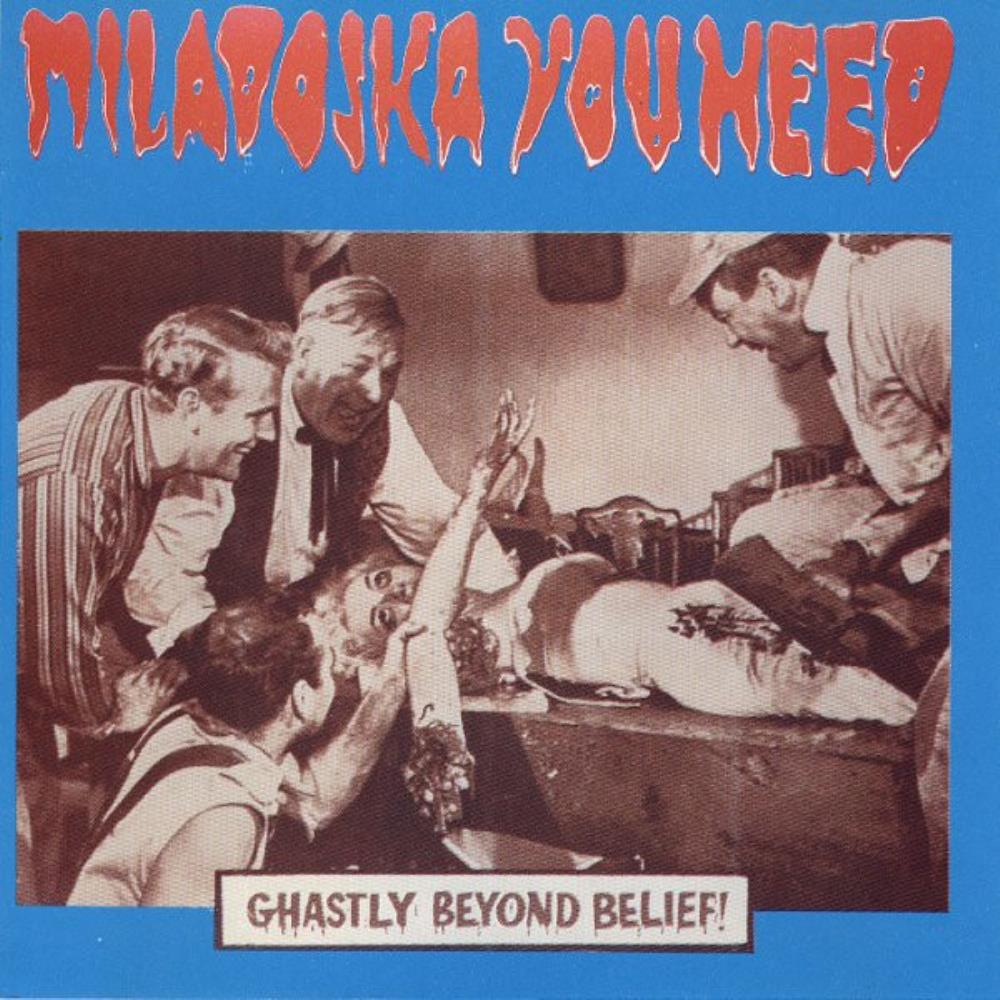The Jazz-Rock Underground of Ljubljana: 1970–Present
Contents
Ljubljana’s Jazz-Rock Underground
When people talk about the music scenes of ex-Yugoslavia, they tend to focus on Belgrade or Zagreb’s Novi Val (new wave), the Yugoslav punk explosion, or Sarajevo’s pop-rock. But tucked away in the quiet corners of Ljubljana, something stranger and groovier was brewing.
From the early-1970s onward, Slovenia’s capital became an unlikely incubator for a hybrid sound — part jazz, part rock, part funk. Thanks in part to its closer cultural ties to Central and Western Europe, Ljubljana became a musical crossroads with better access to American fusion giants and European prog records. Still, the music was shaped by local folk traditions (see Begnagrad), socialist infrastructure, and a touch of psychedelic experimentation — Ljubljana’s jazz-rock and prog scene was fiercely creative and totally unique. Drawing from an open and musically literate environment, the result was complex and culturually distinct grooves.
Venues like Križanke and later Metelkova became homes for fusion styles — jazz, satire, experimental rock and theatrical prog. State support mattered, too: RTV Ljubljana, the national broadcaster, played a key role, running an in-house big band (see Plesni Orkester RTV Ljubljana), organising regular radio sessions, and offering high-quality recording studios — all vital for the technical demands of fusion and prog.
This guide traces Ljubljana’s jazz-rock story from its golden roots in the 1970s, through its more fragmented second wave in the 1980s, and into its modern-day echoes. It highlights essential albums, forgotten gems, and strange masterpieces that defined the scene — and proves that even in a small city, brilliant music can thrive far from the spotlight.
5 Essential Jazz-Rock Albums to Start With
I’ve attempted to compile a pack of five essential records from the Ljubljana jazz-rock scene. You’ll find three records from the 70s era and two records from the second wave in the 80s, which is more experimental and avant-garde. I’d start from number one and move forward from there.
Here’s your essential jazz-rock pack:
- Zadnja Avantura – September (1976) The scene’s calling card: fiery, stylish fusion, and endlessly groovy. Best paired with Asanović’s solo record Majko Zemljo.
→ Review is coming - Brez Naslov – Predmestje (1977) Warm, saxophone-led jazz-rock with an organic production style. Loose, jammy, and inventive.
→ Review is coming - Izvir – Izvir (1978) The crown jewel of Ljubljana jazz-rock. Cosmic textures, funky grooves, and fantastic soloing.
→ Read my review - Begnagrad – Begnagrad (1982) Klezmer-folk-jazz-prog? Avant and proud. Bizarre and brilliant.
→ Review is coming - Ghastly Beyond Belief! – Miladojka Youneed ((1987) Wild fusion of jazz, noise, and post-punk. An unclassifiable swan song for the original movement. No wave.
→ Review is coming
The full list will be available soon.
Want More?
Get 5 Bonus Deep Cuts — obscure, underrated, and mind-blowing Ex-YU albums sent straight to your inbox.
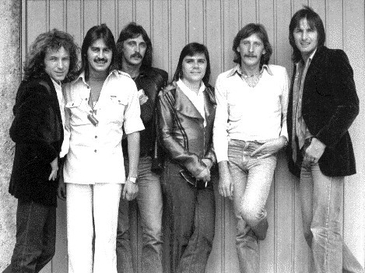
September (Band in 1977, via Wikipedia)
Jazz-Rock Eras
1970s: The Golden Core
One of the foundational albums of this movement was September’s Zadnja Avantura (1976), a stylish, funky release that has since picked up a cult following internationally — especially after Kendrick Lamar sampled “Ostavi Trag” on his track DUCKWORTH. The band, formed in 1975, was a supergroup of sorts: organist Tihomir Pop Asanović, vocalist Janez Bončina, and jazz trumpeter Petar Ugrin. Each brought serious pedigree — Asanović played in the Croatian band Time and also had a successful jazz-funk solo album, Majko Zemljo (which you can read my review of here), and Ugrin had been a member of Mladi Levi and the RTV Ljubljana Jazz Orchestra.
“He [Ugrin] was a virtuoso… we dared to perform next to those American stars. We had the nerve to do it.”
— History of Slovenian Jazz (source)
After the success of Zadnja Avantura, they released a second album — Domovina Moja (1979) — with a more mainstream, less experimental tone before disbanding. But they had already opened the door for a series of jazz-fusion and prog groups across Ljubljana, many of whom would make records that still sound fresh today.
Among the scene’s most beloved deep cuts was Izvir’s self-titled 1978 LP. Capturing the hybrid movement perfectly — it’s a confident six-track LP that fuses jazz, funk and progressive rock in one of the tightest and most underrated Yugoslav releases of its kind. Fans of Santana’s Caravanserai will feel at home here, especially in the album’s more cosmic, groove-heavy passages.
A rush of inventive albums followed in the late ’70s, blending soul, jazz, funk, and psych with the intensity of Yugoslav rock. However, a lot of these records are extremely collectible and end up going for eye-watering amounts on Discogs. Thankfully, record labels like ZKP RTVS have begun remastering them — providing us with access to many of these otherwise inaccessible hidden gems.
Some key records:
- Zadnja Avantura – September (1976) The scene’s calling card: fiery, stylish fusion, and endlessly groovy. Best paired with Asanović’s solo record Majko Zemljo.
→ Review is coming - Raskorak – Oko (1976) Guitar-heavy, Hendrix-inspired psychedelic fusion with strong melodic ideas. Features Izvir‘s keyboardist on select tracks.
→ Review is coming - Brez Naslov – Predmestje (1977) Warm, saxophone-led jazz-rock with an organic production style. Loose, jammy, and inventive from the long-running group.
→ Review is coming - Izvir – Izvir (1978) The crown jewel of Ljubljana’s jazz-rock underground — blending psych, funk, and Balkan soul with a unique atmospheric weight. Remastered in 2024 by ZKP RTVS.
→ Read full review: track-by-track breakdown, context, and sound - Sončna Pot – Sončna Pot (1979) Smoother and more atmospheric. Think mellow Herbie Hancock meets soft fusion.
→ Review is coming - Boomerang – Boomerang (1979) From Koper, but tied to the Ljubljana scene. More blues-influenced, but packed with fusion firepower.
→ Review is coming - Domovina Moja – September (1979) More introspective and lyrical. Politically resonant and softer in tone than their debut.
→ Review is coming
Want deeper analysis? Each album listed here either links to or will link to a full review — with artist background, key tracks, and historical context.
1980s: Second Wave
By the late ’70s, Ljubljana was home to a growing avant-garde art and theatre scene that increasingly overlapped with its music culture. Experimental performance spaces, independent collectives, and alternative publications helped foster a subcultural ferment — one that was beginning to crack the uniformity of late socialist realism. Early signs of the radical ethos that would later define groups like Laibach were already surfacing in music, theatre, and visual art.
It was within this environment that Ljubljana’s jazz-rock scene began to fragment. The original torchbearers — Izvir, September, Oko — had either disbanded or softened their sound. In their place, a new wave of musicians emerged, reacting to the political uncertainty of the 1980s and the rise of Novi Val (new wave), punk, and postmodern experimentation.
The decade opened with a continuation of smooth, polished jazz-rock from longtime players like Predmestje and newer groups like Jutro. But quickly, artists like Srp, Begnagrad, and Quatebriga began to break form — fusing jazz with satire, folk, theatre, and free improvisation. Their work was often off-kilter, even asburd, blending influences from Frank Zappa, Rock in Opposition, and Eastern European folklore. Toward the end of the decade, Miladojka Youneed pushed the sound to its outermost limits — drawing from no wave, noise, and industrial textures that blurred the line between jazz, rock, and performance art.
If the ’70s were about groove, the ’80s were about disruption. These records become increasingly less accessible as the years go on — expect sharp turns into free jazz, jagged compositions, and confrontational sonic aesthetics. But in that chaos lies some of the most progressive and artistically daring music ever produced in Yugoslavia.
Some key records:
- Hazard – Predmestje (1980) Now joined by ex-Izvir members, this LP offers glossier arrangements and synth touches.
→ Review is coming - Dobro Jutro – Jutro (1980) Laid-back, melodic fusion with a more pop sensibility.
→ Review is coming - Na Lepem Prijazni – Na Lepem Prijazni (1980) Zappa-influenced, sarcastic, and theatrical. Sax-led prog with a Novi Val (new wave) attitude.
→ Review is coming - Begnagrad – Begnagrad (1982) Avant-garde, folkloric, and proud. Bizarre but brilliant.
→ Review is coming - Srp – Srp (1984) A prog/jazz-rock record that can be hard to find.
→ Review is coming - Ob Šanku – Janez Bončina (1985) Lead vocalist from September‘s solo debut.
→ Review is coming - Revolution In The Zoo – Quatebriga (1985) After Begnagrad‘s dissolution, members would form Quatebriga.
→ Review is coming - Ghastly Beyond Belief! – Miladojka Youneed (1987) Wild fusion of jazz, noise, and post-punk. An unclassifiable swan song for the original movement. No wave.
→ Review is coming
Modern Day: Echoes of the Past
Jazz-rock never truly vanished from Ljubljana — instead, it evolved quietly, reshaping itself through new technologies, global influences, and a digital-native generation of musicians. From the early 2000s onward, a handful of bands began carrying the torch, often blending classic fusion elements with slick production, ambient textures, or progressive rock revivalism.
Groups like Moonlight Sky and Feedback brought a polished, technically accomplished approach to the genre, clearly indebted to the ’70s pioneers but infused with modern sensibilities. Meanwhile, artists like Divje Jezero and Sfiltrom embraced denser atmospheres and conceptual ambition, pointing back to the golden era while carving out a darker, more introspective sound.
Though the scene today is more diffuse, its spirit lingers through events and festivals, such as the thriving Ljubljana Jazz Festival. The influence of Ljubljana’s fusion roots can still be felt across Slovenian experimental rock, jazz, and prog. And in the age of Bandcamp and archival reissues, these records are finding new ears far beyond the region, proving that Ljubljana’s strange groove never truly stopped echoing.
Some key artists:
- Moonlight Sky – Moonlight Sky (2006) A polished, melodic modern fusion album. Accessible and technically strong.
→ Review is coming - Feedback – Feedback (2008) Funky, upbeat, and rooted in tradition — but with a contemporary edge.
→ Review is coming - Sfiltrom – Nekoč Boš Srce Ljubljane (2008) 70s style modern prog rock.
→ Review is coming - Pobeg Iz Blodnjaka – Divje Jezero (2017) Dense and atmospheric prog-jazz. A modern callback to the scene’s heyday.
→ Review is coming
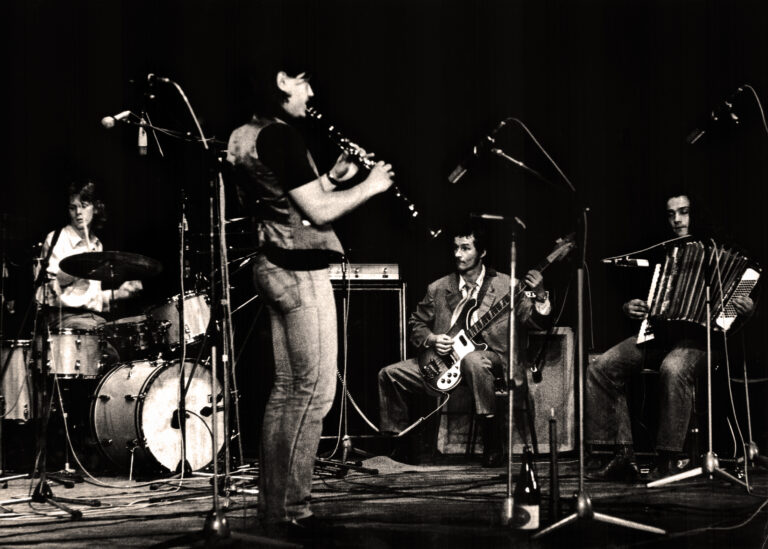
Begnagrad live in Novi Sad (1977) | Igor Muševič, Bogo Pečnikar, Vlado Špindler, Bratko Bibič | Archive Gallery P74
Divergent Paths: Jazz, Prog, and Other Outliers
While jazz-rock sat at the centre of Ljubljana’s musical experiment, its branches reached in all directions — into electronic prog, avant-folk, big band jazz, and sharp-edged satire. The city’s creative ecosystem allowed for cross-pollination: conservatory-trained jazz players might perform in absurdist theatre troupes, while prog musicians flirted with analog synths, punk aesthetics, or folkloric motifs.
Bands like Buldožer injected a Zappa-style and theatrics into prog-rock, turning concerts into biting, surreal performances. Petar Ugrin, a key figure in the jazz scene, and previous member of September, released solo fusion work featuring excellent trumpet playing, while Miha Kralj ventured deep into synthy space odysseys. Meanwhile, state-supported institutions like Plesni Orkester RTV Ljubljana maintained the city’s jazz pedigree with polished, big-band recordings that gave younger fusion artists a foundation to build from.
These side-streams add essential texture to Ljubljana’s music history — not always jazz-rock in the strictest sense, but part of the same adventurous, genre-defying spirit.
Some key artists:
- Pljuni Istini u Oči – Buldožer (1975) Slovenia’s Zappa. Satirical, theatrical, and deeply weird. Legendary for good reason.
→ Review is coming - Križanke – Plesni Orkester RTV Ljubljana (1976) Big band jazz from Slovenia’s best players. A glimpse into the city’s deep musical roots.
→ Review is coming - Samo Muzika – Petar Ugrin (1979) Fusion-leaning jazz with tight grooves and gorgeous trumpet work.
→ Review is coming - Andromeda – Miha Kralj (1980) Electronic space-prog. Think Tangerine Dream crossed with Jarre.
→ Review is coming
Listen to our Curated Playlists
Ready to listen? These playlists are updated regularly with new finds, fan favourites, and deep cuts.
- Ex-YU 101: Starter Pack
- Post-Punk & Novi Val Essentials
- Coastal Sounds: Split, Rijeka & Dalmatia
- Modern Ex-YU Rock (2000–Now)
- Ex-YU Jazz-Rock: Ljubljana
Explore More
Consider engaging with these external lists, documentaries and books to further explore the scene:
- Excavating Slovenia’s Rock In Opposition – Article from It’s Psychedelic Baby! on the RIO (Rock In Opposition) movement in the ’80s
- Sretno Dijete – Rockumentary featuring the emergence of Yugoslav punk and new-wave
- Ex-YU Rock Encyclopedia – Book featuring information regarding most of the important rock and music acts from the time
- Seventh Republic – pop culture in the collapse of Yugoslavia – A journey through Ex-YU music, politics and history
Stay Connected!
- Subscribe to our newsletter to stay updated – it’s free!
- Instagram: @exyumusic.yu
- TikTok: @exyumusic.org
- Spotify: @exyumusic
- Contact us at: [email protected]
